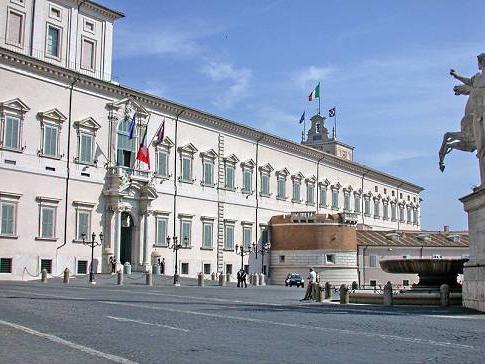For the first time in the 67-year history of the Italian Republic, the incumbent head of state re-occupied the presidency. Giorgio Napolitano, a popular politician at the national level who has repeatedly led the country out of a political impasse, had to agree to a second presidential term, by the end of which he would turn 94 years old. Since April 20, 2013 he is the 12th president of the country.
The parliamentarians, who unexpectedly laid the burden of responsibility for the state on the elderly shoulders of Napolitano, did not violate a single article of the Constitution, which clearly indicates how the Italian president should be elected. By the way, in the Basic Law of the country there is no article defining how many times the same citizen can be elected to the post of head of state.
The Italian Constitution imposes the following requirements on a candidate for the post of head of state:
- citizenship of the Italian Republic,
- age from 50 years
- possession of civil and political rights.
7 years is the term for which the President of Italy is elected. Electors take part in secret ballot: deputies, senators and delegates appointed by the regional councils of all regions of the country.
To win the first 3 rounds of voting, the candidate for the presidency must collect more than 2/3 of the votes of the meeting participants; in 4 and subsequent rounds, it is enough to get the majority of votes in order to be elected President of Italy. After 6 rounds, Giorgio Napolitano became the first re-elected president in Italian history.
For the oath ceremony, a joint meeting of the Chamber of Deputies and the Senate of the Italian Republic is specially convened. The law prohibits combining the post of president with any other post. The President of Italy leads the state, represents national unity and is the guarantor of the constitution.
According to the constitution, the head of state is assigned the functions of commander of the armed forces, chairman of the Supreme Council of Defense and the Supreme Council of Magistracy. Italian President calls referendum and parliamentary elections; ratifies international agreements; enjoys the right of pardon. They are appointed and dismissed by the Prime Minister of Italy. The head of state, on the proposal of the prime minister, appoints ministers.

The constitutional norms provide for two presidential prerogatives in relation to parliament: he has the right to dissolve one or two chambers of parliament at once and the right to demand a reconsideration of draft laws. However, the delayed veto of the head of state in parliament can be overcome by a simple majority vote. A separate article of the Italian constitution exempts the president from responsibility for the actions that he performs while in office. The responsibility of the president comes only in case of betrayal of the interests of the state or encroachment on the Constitution. The official residence of the president - the Quirinale Palace - is located in Rome.
Recent events related to the re-election of Napolitano for a second term indicate the increased influence of the president on the activities of the parliamentary republic. Whether his role remains limited by the framework of the formal functions of a “custodian of constitutional values,” time will tell.